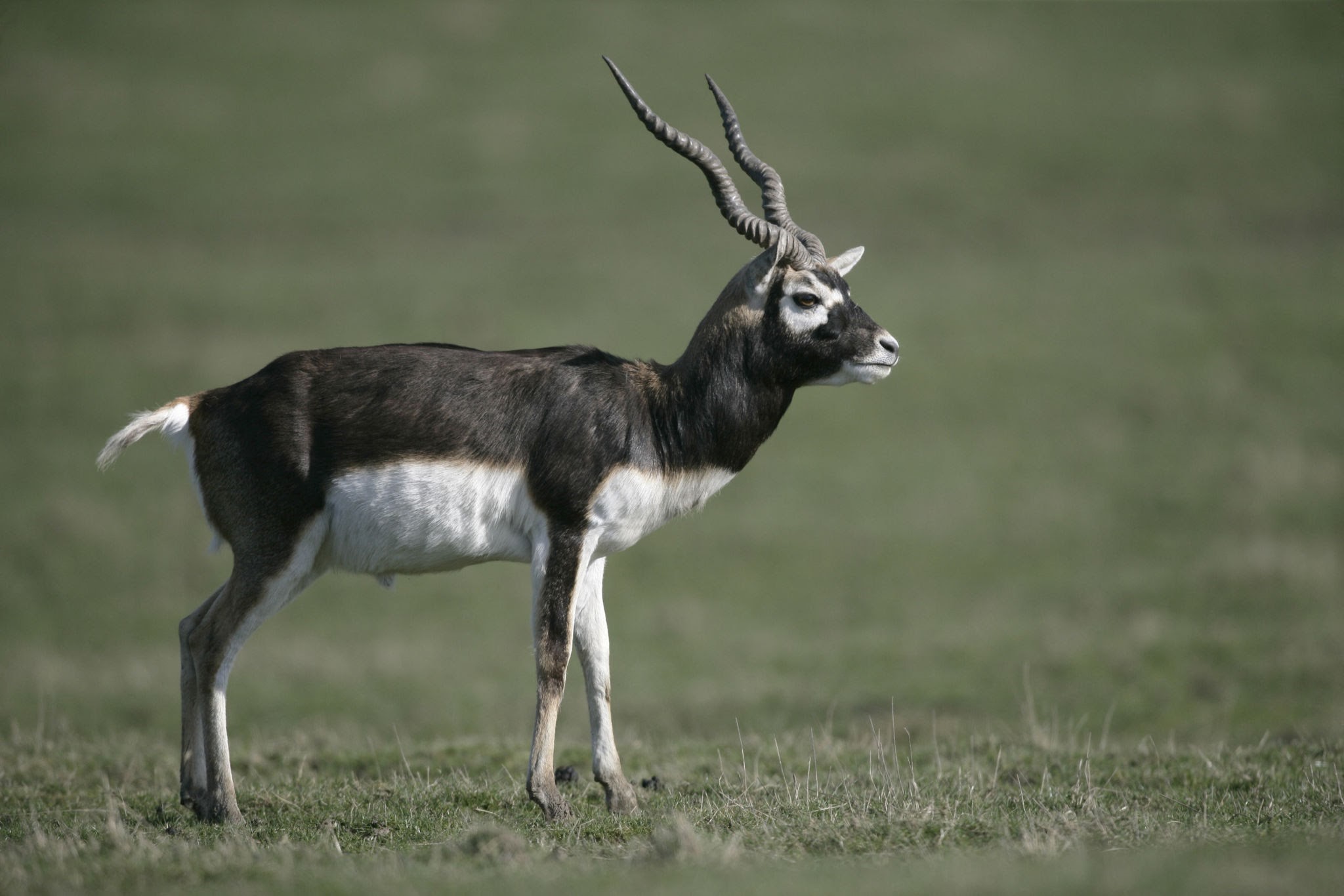Description

Disclaimer: Copyright infringement not intended.
Context: A new study conducted by the Indian Institute of Science (IISc) has shed light on how blackbuck in India have fared in the face of natural and human-induced challenges to their survival.
Details:
Findings:
- What they found was that an ancestral blackbuck population first split into two groups: the northern and the southern cluster.
- The eastern cluster — even though geographically close to the northern cluster — seems to have emerged from the southern cluster.
- Despite all odds, male blackbuck appears to disperse more than expected, thus contributing to gene flow in this species.
- Females, on the other hand, appear to stay largely within their native population ranges, which the researchers inferred from unique mitochondrial signatures in each population.
- The data also showed an increasing trend in blackbuck population numbers as compared to the recent past.
.jpeg)
About:
- The blackbuck is found only in the Indian subcontinent.
- While males have corkscrew-shaped horns and black-to-dark brown coats, the females are fawn-colored.
- The animals are mainly seen in three broad clusters across India that pertain to the northern, southern, and eastern regions.
- The Black Buck is an endangered antelope found only in India and Nepal.
- This graceful and beautiful animal is found roaming in the plains of India except the western coast of India.
- Nowadays, in India this animal is found in many national parks of India like Guindy National Park, Point Calimere and Vellandu Sanctuaries of Tamil Nadu, Rollapadu of Andhra Pradesh, few parts of Rajasthan and Haryana.
THE BLACK BUCK FACTS
|
Scientific Name
|
Antilope cervicapra
|
|
Species
|
M. ursinus
|
|
Local Name
|
Kala Hiran, Sasin, Iralai Maan and Krishna Jinka.
|
|
Diet
|
Herbivore
|
|
Status
|
Near Threatened
|
|
Lifestyle
|
Solitary or in small group of four
|
|
Lifespan
|
12 years
|
|
Top speed
|
50 to 80 km/h
|

- Physical Characteristics: The females also have horns but they are not ringed or spiraled. They have very good eyesight and are also very fast runners, which comprise its main defense against predators.
- Habit and Habitat: The blackbuck mostly lives in open grasslands, dry scrub areas, and thinly forested areas. `Blackbucks cannot sustain cold climate. They are considered as one of the fastest running animals on earth. The black bucks are active during the day and their activities generally slow down with the onset of noon. They generally move in herds.
- Diet: Blackbuck is a herbivorous animal.
- Predators: Wolf, Hyena, Jungle Cat, Jackal, Pythons, Wild Pigs, Feral Dogs.
- Threats: Before the independence of India, Blackbucks were extensively hunted in the princely states of India due to which their population has been declining continuously. This resulted in the extinction of this species in many parts of India also. These animals are hunted for their skin. Poachers have made this species of animal a main target since the 20th
- Conservation: The IUCN List has declared this species as Nearly Threatened. Hunting of blackbuck is prohibited under Schedule I of the Wildlife Protection Act of 1972
- Natural Resources Conservation outside Protected Areas (NRCOPA) scheme in the Ganjam district of Orissa launched the Bhetonai – Balipadar project to protect Black Bucks. The NRCOPA is a Central Government Scheme for biodiversity conservation through community efforts.

https://www.thehindu.com/sci-tech/energy-and-environment/iisc-study-sheds-light-on-how-blackbuck-survive-challenges/article66360762.ece













